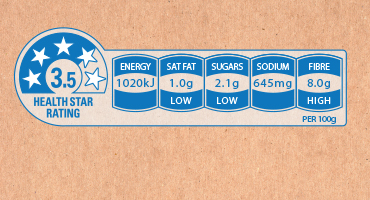The AMA has concerns about a proposal which focuses on reducing the regulatory burden for the food industry.
Australia and New Zealand’s food safety standard is not protecting the long-term health of Australians and is focusing too much on protecting manufacturers, says the AMA.
The association submitted a document to the Department of Health earlier this month outlining its concerns ahead of the first review into the Food Standards Australia New Zealand Act 1991 (FSANZ Act).
In what will be the first revision of the law in 30 years, the AMA said the reform should overhaul current policy, which neglects its primary objective of protecting the health of the public.
“A food regulatory system that successfully protects public health would see reductions in the rate of dietary-related chronic disease, along with controlling more acute threats like infectious and food-borne disease outbreaks,” the AMA said in its submission.
“The current food regulatory system is not successfully protecting the long-term health of Australians.”
Dietary risks in 2015 were the third highest risk-factor for Australia’s burden of disease, contributing to 37,000 disability-adjusted life years after tobacco and overweight.
And for the past two decades, dietary risks have been a leading risk factor for chronic disease such as heart disease, stroke, hypertension, diabetes and some cancers.
Submissions like the AMA’s will form the development of a final regulatory impact statement by the DoH, which would then be used to inform any amendments to the FSANZ Act.
The AMA said in addition to consumers being uninformed about added sugar in the food products they bought, children were also inundated with marketing which encouraged the consumption of unhealthy food and drinks.
Another point of concern was the failing of the Health Star Rating system, with only about 30% of eligible food and beverage products participating in the scheme.
The Health Star Rating was developed in 2014 and funded by the Australian state and territory governments as a front-of-pack labelling system rating the nutritional profile of packaged food.
The number of stars on a product was determined using a nutritional calculator developed in consultation with FSANZ, with one star being less healthy and five stars suggesting the product is a sound nutritional choice.
But Dr Gina Cleo (PhD), a dietitian and Assistant Professor of Behaviour Change at Bond University, said the Health Star Rating system was misleading consumers because it failed to accurately represent the nutritional value of the food products.
“If [manufacturers] want to gain a 4.5 Star Rating they can do so based on the serving suggestion they write, for example adding chopped fruits or a glass of skim milk, which is manipulative because it’s not a realistic serving suggestion,” she said.
Products were also rated higher for adding “healthy” components such as fibre or protein, which cancelled out excess sugar.
“You can have a 4.5 Star Rating even when a product is 50% sugar because it’s high in fibre, so it’s no wonder people are very confused and probably not taking it very seriously,” Dr Cleo said.
Dr Cleo said that if Australia and New Zealand had a preference of using a rating system, it needed to be one that was mandatory for all manufacturers, and standardised serving sizes across the industry.
“The serving size should be per 100g because this is what we as health professionals, as dieticians, use to compare and that way the food manufacturers can’t manipulate the serving sizes to enhance their rating,” she said.
However, on a national level, Australia might need to better regulate how food is sold including product placement, product availability and information about products in supermarkets.
“Nudges are being used in research extensively to create better food choices and this can be done in a way to encourage the consumption or the purchase of fruit or vegetables,” Dr Cleo said.
“If there was some signage, for example, saying a whole section of the supermarket will give you a five-star rating, you could start to make comparisons across the whole store.”


